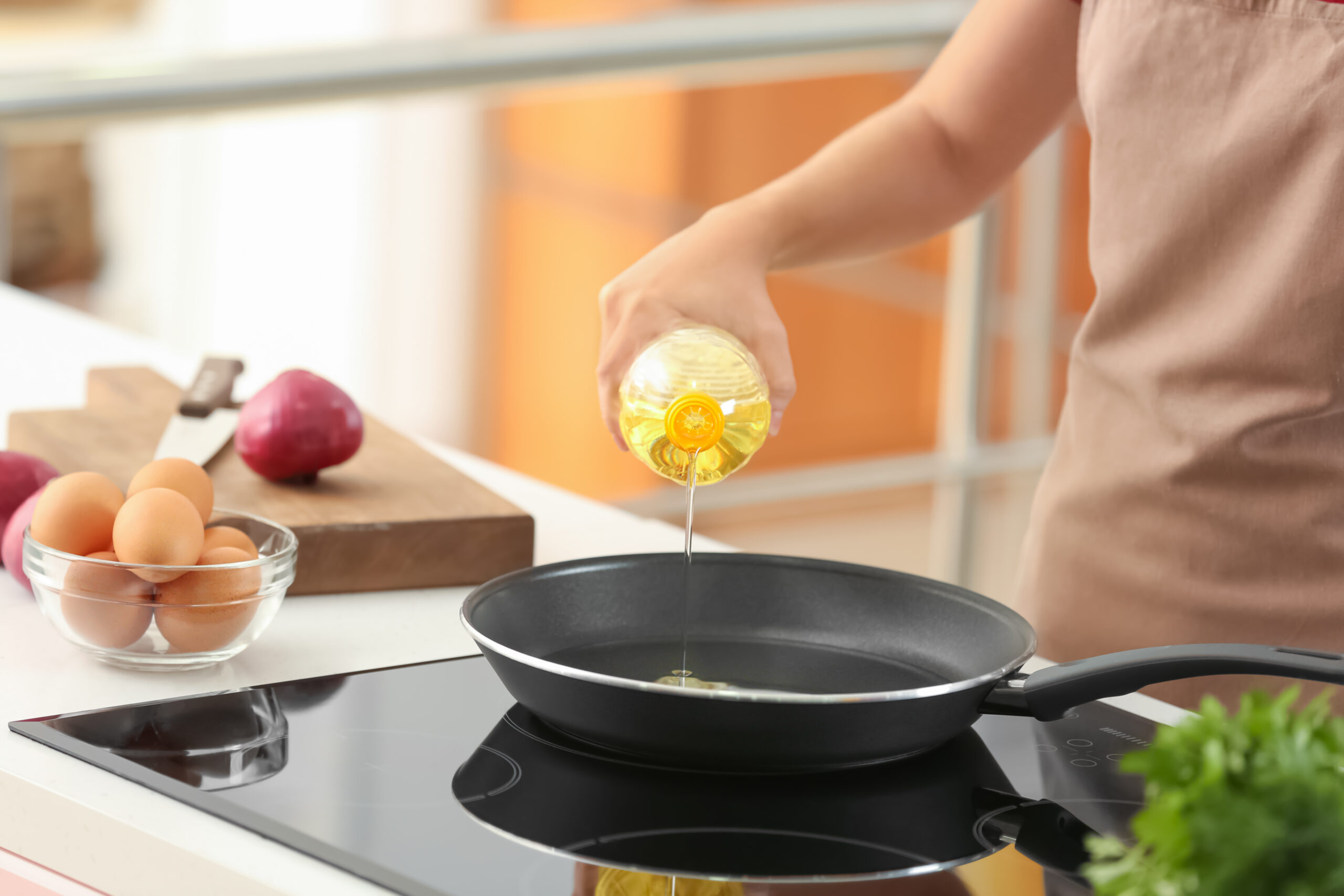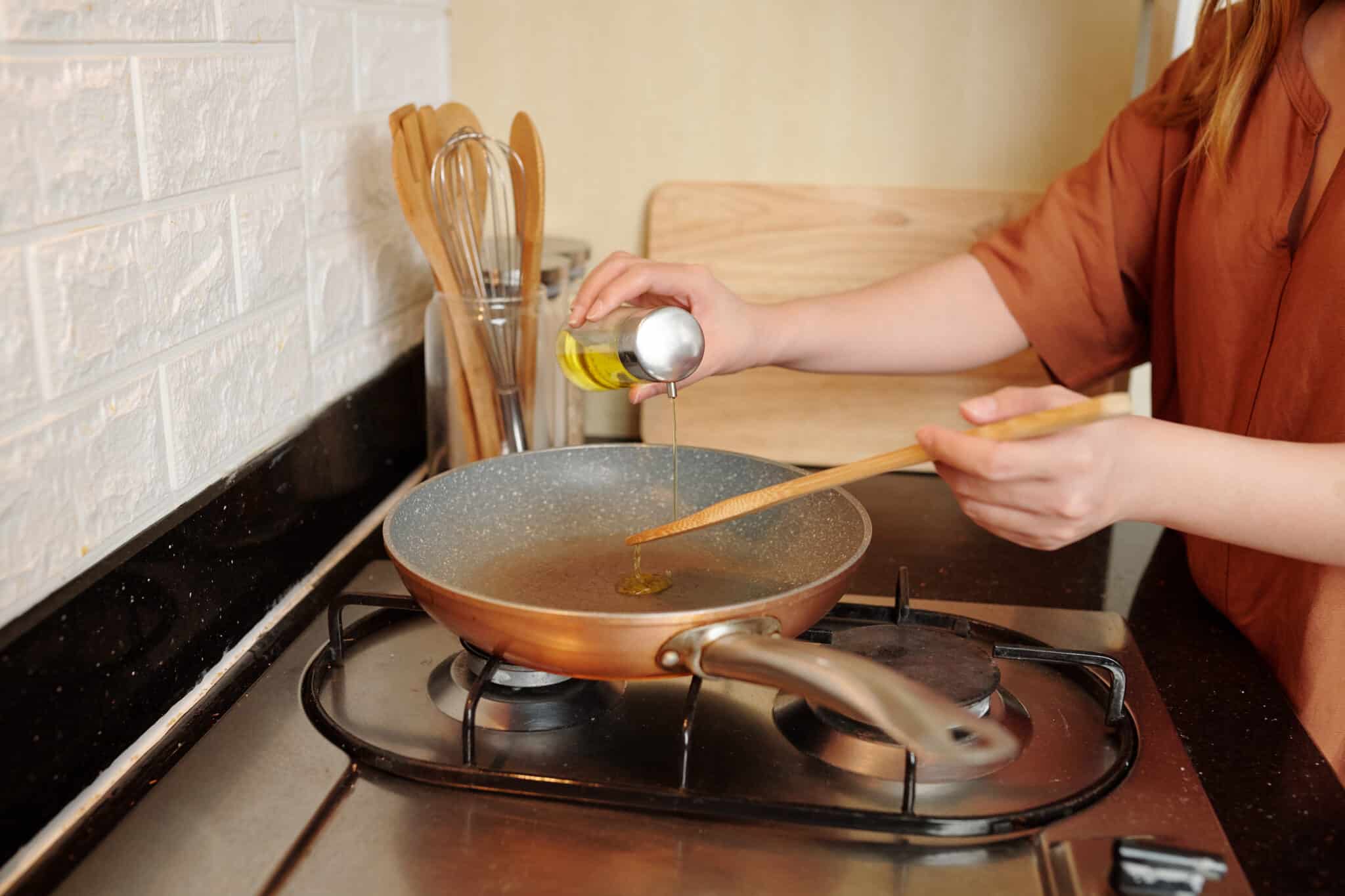If you do a lot of frying, then you must’ve wondered what to do with the leftover oil. And most people believe they should be discarded and a new supply is used with every cooking process. But did you know you could reuse oil after frying? If you didn’t then you must feel annoyed if you’ve been throwing it away.

Cooking Oil Nutrition Facts

Why Reuse Cooking Oil?
You may wonder if keeping used oil for later use is pointless, and you won’t be wrong. And since most of us only use a little amount for cooking, there’ll barely be any left in the pot or pan to keep. But if you do a lot of deep-frying that requires large volumes of cooking oil, you may want to have a rethink.
Cost-Saving: You’ll cut down on how much you spend on cooking oil by saving leftovers after use. Though cooking oil isn’t generally expensive, some can be quite pricey, and you’ll want more bang for your buck by tucking it away instead of discarding it.
Fewer Grocery Trips: Oil is one of the numerous kitchen ingredients that quickly run out, and sometimes, we find ourselves stranded because we’ve exhausted our stock. But keeping leftover oil after cooking saves you frequent shopping trips and stress.
Flavorful Results: When you fry certain foods like meat or fish, the essence seeps into the medium as it cooks. This leaves the oil with a rich flavor from such foods that can benefit recipes that use it.
Storing Used Cooking Oil
Storing cooking oil after use is an economical and flavor-enhancing technique that has been used by food enthusiasts for decades. And you can join the team by following these simple steps;
Cool the Oil
The oil remains quite hot after frying, so before storing, you’ll first have to let it completely cool. This move achieves three results, with the first being you won’t risk getting burnt by hot oil as you turn it into a container. The second is hot oil releases steam that’ll condense in the container, leaving a residue that can spoil the oil. And the third is you won’t damage the container if it’s plastic or any other material susceptible to heat. So, let the oil reach room temperature before moving to the next step.
Strain the Oil
This step is especially important when you cook foods that break in the oil. Items like fish, chicken, or breaded items turn crispy as they fry, and bits of the surface will shed into the oil. Straining the oil is important as the residue will burn when it’s reused, affecting your dish’s flavor. So, run the oil through a cheesecloth or fine mesh strainer.
Store the Oil
Once the oil is completely strained, transfer it into a container for storage. Most prefer glass jars since they’re easy to open and almost everyone has them sitting around in the kitchen. But ensure that the jar is properly cleaned and dried before pouring the oil. If you also have the oil’s original bottle, you can use that. And plastic bottles also work, provided they’re clean, food-safe, and with a tight seal.
View this post on Instagram
Tips for Storing and Reusing Cooking Oil
Used oil can be added to any recipe you prefer, but a few factors must be considered.
- Only reuse oil with a high smoking point, like canola, sesame, avocado, grapeseed, or sunflower. These types hold well at temperatures above 400F, and thus can be reused. Never store olive oil for reuse.
- Used oil will carry the flavor of whatever was cooked in it, so note this before adding it to your meal. So, unless you don’t mind such an influence on your food, only reuse oil in recipes of compatible or complementary flavors.
- If you’re frying multiple foods in oil you plan to reuse, take note of your cooking order. Start with vegetables, as they’ll leave the least impact in your oil. Batter will shed into the medium, but they can be easily skimmed off the surface. But breaded foods deposit the most particles into the oil. Arranging your cooking order this way allows you easily strain the oil, and reduces the chance of influencing weaker foods.
- Store the oil in a cool place, and well away from heat sources, including near the stoves, microwaves, or ovens. Heat exposure breaks down the oil, even in storage, ruining the purpose of reusing. Consider keeping it in the kitchen pantry, or behind the cabinet. You can also store it in the fridge, where it’ll hold for more than a week.
- Direct sunlight and bright light also deteriorate cooking oil faster, so ensure to store it in a dark area.
- Oil loses its potency the more it’s used, so take note. Once you note it’s going bad, discard it at once. A thick, cloudy, or gummy color indicates spoilage in used oil. Other hints to note include foam on the top or an off, rancid odor. A safer precaution, however, is to dispose of used oil that is more than six weeks old.
- Ensure to use proper disposal methods for discarding unwanted cooking oil, and never pour it down your drain. You can consider bottling it or pouring it into a resealable container before dumping it in the trash.
Saving cooking oil for reuse is great for cutting costs and minimizing waste, and these instructions can help you do that. But if you want more assistance, watch this video.
